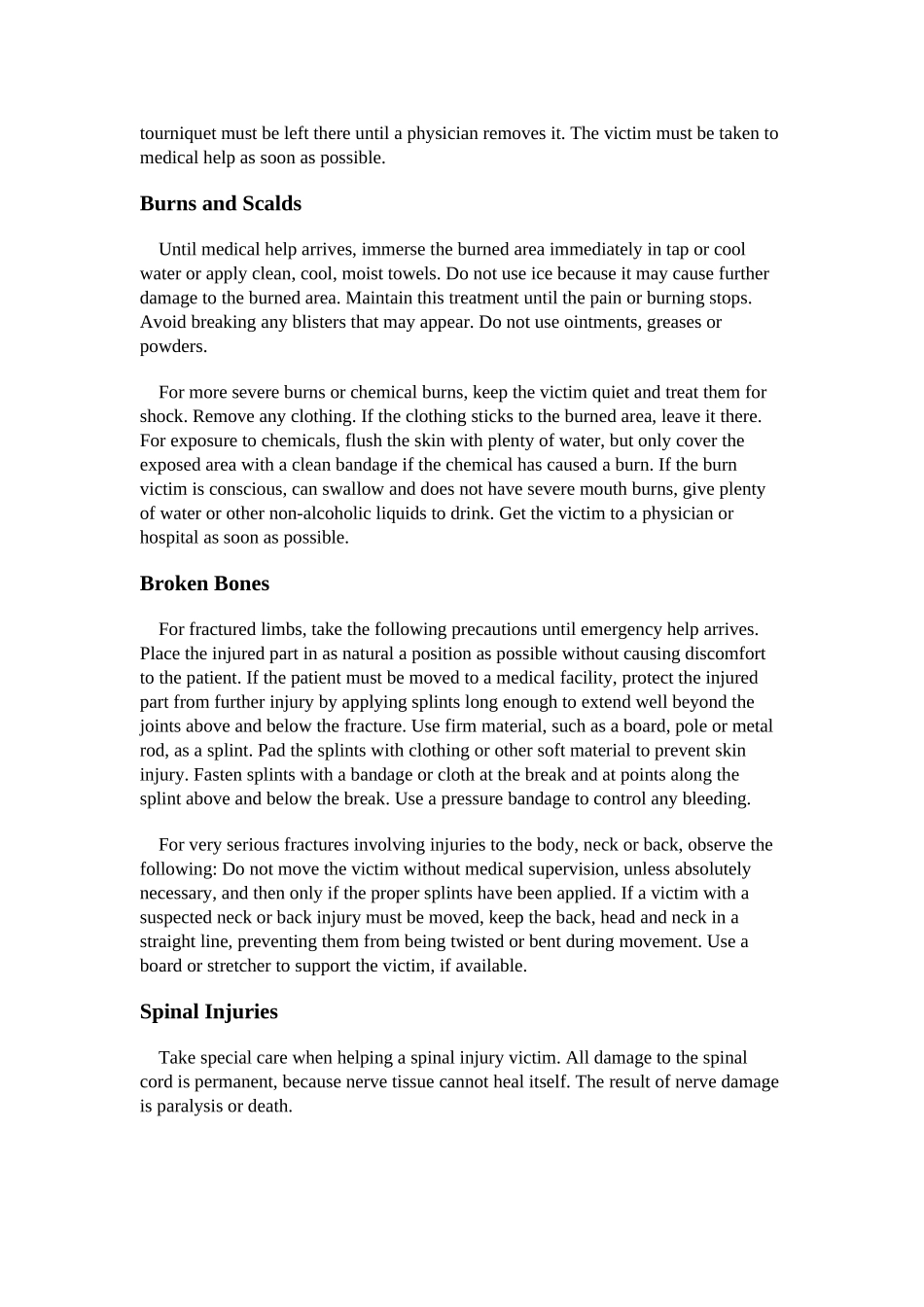Basic First AidAccidents happen anywhere and anytime. The first response to an accident is the most important. Often times, first aid given at the scene can improve the victim’s chances of survival and a good recovery. The right response is better than an incorrect quick one. Any response, even if it is wrong, is better than none at all.Unconscious VictimIf the victim is unconscious, perform rescue breathing. (Rescue breathing is explained later on in this section.) If the victim’s heart has stopped beating, perform resuscitation (CPR) if you have been properly trained to do so. ShockShock usually accompanies severe injury or emotional upset. The signs are cold and clammy skin, pale face, chills, confusion, frequent nausea or vomiting and shallow breathing. Until emergency help arrives, have the victim lie down with the legs elevated. Keep the victim covered to prevent chilling or loss of body heat. Give non-alcoholic fluids if the victim is able to swallow and has not sustained an abdominal injury. BleedingUntil emergency help arrives, try to control bleeding. If possible, first put on rubber or latex gloves before touching blood. If these are not available, a clean plastic bag can be used to cover your hands. It is important not to come in contact with blood because of the health risks.If finger or hand pressure is inadequate to control bleeding, place a thick pad of clean cloth or bandage directly over the wound, and hold in place with a belt, bandage, neckties or cloth strips. Take care not to stop the circulation to the rest of the limb. For injuries where a tie cannot be used, such as to the groin, back, chest, head and neck, place a thick pad of clean cloth or bandage dir...


